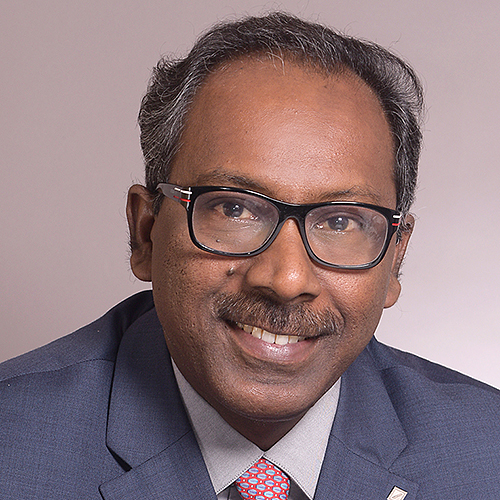Ten years ago, the custody business in Asia was pretty straightforward. Custodian banking is split between global custodians and subcustodians.
 Global custodians are represented by four US banks namely, BNY Mellon, Citi, J.P. Morgan and State Street. They provided in-bound access to Asian investments mainly for their US institutional investors and clients.
Global custodians are represented by four US banks namely, BNY Mellon, Citi, J.P. Morgan and State Street. They provided in-bound access to Asian investments mainly for their US institutional investors and clients.Except for Citi, these custodians do not have direct access or on-the-ground presence in Asian markets. Instead, they rely on subcustodian banks for access in Asia. The subcustodians are HSBC, Deutsche Bank, BNP Paribas and Standard Chartered Bank.
 Until recently, the global-custody-subcustody model was working just fine. Global custodians tap subcustodians to invest inbound assets into Asia.
Until recently, the global-custody-subcustody model was working just fine. Global custodians tap subcustodians to invest inbound assets into Asia. For now, Citi is the only global custodian, which has its own subcustody network in the region. Because of this, the bank focuses mainly on its subcustody business in Asia to avoid any conflict of interest with other global custodians to whom they provide subcustody services.
But the emergence of a new investor class in Asia has challenged the global-custody-subcustody model. Among today’s biggest investors are the Asian institutional investors that include sovereign wealth funds and central banks. They have accumulated significant amounts of assets that require investing abroad.
And unlike a decade ago, they’re not settling only for US-dollar-denominated assets (US fixed income products or equities), which have been a significant source of business for global custodians for the longest time. Asian institutions now are looking beyond the US market to invest in Asia and in markets including Latin America, South Africa and the Middle East.
“These Asian institutions have got immense pools of money to invest. They want to have good market access and they want to have a deep understanding of what’s happening in those countries,” says the head of a custodian bank operating in Asia.
The low-yield environment and a need for diversification have pushed this new class of investors to seek new markets for their money.
That has blurred the lines between the roles of the global custodians and subcustodians. The market realities are driving subcustodians to have the capability not only to service the investment requirements of Asian institutions within Asian markets, but also acquire expertise on markets outside the region.
This new business model known as ‘international custody’, seeks to combine on-the-ground capabilities of subcustodians and the global reach of global custodians. The objective is to effectively address the new investment requirements of Asian financial institutions.
International custody
The main difference between the so-called international custody and the traditional global-custody model is in the way Asian financial institutions are given access to markets beyond Asia and the US.
The main difference between the so-called international custody and the traditional global-custody model is in the way Asian financial institutions are given access to markets beyond Asia and the US.
Under the international custody model, an Asian institutional investor can gain direct access to any market with the help of their custodian banks. Under the global-custody model, they access these markets through the subcustodian network of global custodians.
Ease of access to certain markets has made the international-custody model more attractive to Asian financial institutions. Institutions’ familiarity with some of the subcustodians also presents an advantage for banks running an international-custody model. Most of these investors are familiar with them as they have most likely worked with these custodians in the past.
“They prefer to go to the subcustodians because they want the market understanding, efficiency, as well as immediate access into those market,” says a global head of a subcustodian bank.
Asian investors prefer to work with subcustodians for the ease in dealing with them when they have to make investments in markets that are volatile and unfamiliar. To illustrate, Asian investors planning to invest in Africa will find familiarity with African markets an issue. “There are two international regional banks in Sub-Saharan Africa, but they’re not familiar with these banks. The distance from Asia is also an issue,” adds the subcustodian bank executive.
For now, Deutsche Bank and Standard Chartered Bank are the only two banks offering international custody services following an internal restructuring. Other banks are doing the same.
The challenge
But just how are these changes impacting the industry? Despite the growing popularity of the international-custody model among Asian institutions, industry experts believe the new servicing scheme is unlikely to completely dislodge the traditional global-custodian-subcustody model.
But just how are these changes impacting the industry? Despite the growing popularity of the international-custody model among Asian institutions, industry experts believe the new servicing scheme is unlikely to completely dislodge the traditional global-custodian-subcustody model.
There will always be demand for the services of global custodians, industry experts note. However, they too predict demand for international custody services will grow as Asian institutions accumulate more assets going forward.
“There are new business models that allow clients to invest directly in specific markets without going through the global-custody-subcustody model. These business models are basically a combination of features from the regional and global custody propositions and that’s turning out to be more efficient than the classic model where you choose the global custodian and he is actually working with 60, 70, 80, or even 100 subcustodians,” says a former head of an Asian subcustodian bank.
For global custodians, there will always be business opportunities for them in Asia since many Asian institutions believe in using only the biggest global banks when they invest overseas.
“The belief is that you need a global custodian because you are investing all over the world. You need one of the biggest banks to safeguard your assets and your assets are safer when they are alongside assets of other institutions. At the time global custodians started doing business in Asia, there was no other proposition,” an industry veteran notes.
“What’s happening now is that there are other propositions, which allow clients to invest differently. Their asset profiles, and where they’re investing are also changing dramatically. Their level of attention around emerging markets is definitely rising wherever they are in the world, whether they’re in Asia or not,” he adds.
Subcustodian banks will continue to deal with global custodians who do business in Asia. But their role will continue to evolve as clients become more demanding about their investment requirements. Emerging markets are a growth area for most subcustodians.
Those elements coming together are what has been transforming today’s custodian servicing industry.





.jpg)
.jpg)


